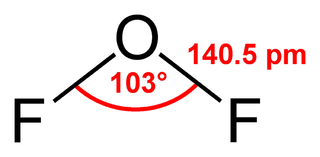
Turpentine is a fluid obtained by the distillation of resin from live trees, mainly pines. It is mainly used as a solvent and as a source of materials for organic synthesis.

Illicium verum is a medium-sized evergreen tree native to northeast Vietnam and southwest China. A spice commonly called star anise, staranise, star anise seed, Chinese star anise, or badian that closely resembles anise in flavor is obtained from the star-shaped pericarps of the fruit of I. verum which are harvested just before ripening. Star anise oil is a highly fragrant oil used in cooking, perfumery, soaps, toothpastes, mouthwashes, and skin creams. About 90% of the world's star anise crop is used for extraction of shikimic acid, a chemical intermediate used in the synthesis of oseltamivir (Tamiflu).

The 1918 influenza pandemic was an unusually deadly influenza pandemic, the first of the two pandemics involving H1N1 influenza virus. It infected 500 million people around the world, including people on remote Pacific islands and in the Arctic. Probably 50 million, and possibly as high as 100 million died, making it one of the deadliest epidemics in human history. Historical and epidemiological data are inadequate to identify with certainty the pandemic's geographic origin.

Influenza A virus causes influenza in birds and some mammals, and is the only species of the genus Alphainfluenzavirus of the virus family Orthomyxoviridae. Strains of all subtypes of influenza A virus have been isolated from wild birds, although disease is uncommon. Some isolates of influenza A virus cause severe disease both in domestic poultry and, rarely, in humans. Occasionally, viruses are transmitted from wild aquatic birds to domestic poultry, and this may cause an outbreak or give rise to human influenza pandemics.

A fluorophore is a fluorescent chemical compound that can re-emit light upon light excitation. Fluorophores typically contain several combined aromatic groups, or planar or cyclic molecules with several π bonds.

Rimantadine is an orally administered antiviral drug used to treat, and in rare cases prevent, influenzavirus A infection. When taken within one to two days of developing symptoms, rimantadine can shorten the duration and moderate the severity of influenza. Both rimantadine and the similar drug amantadine are derivates of adamantane. Rimantadine was approved by the Food and Drug Administration (FDA) in 1994.

Live attenuated influenza vaccine (LAIV) is a type of influenza vaccine in the form of a nasal spray that is recommended for the prevention of influenza. In June 2016, the Centers for Disease Control and Prevention (CDC) stopped recommending the use of LAIV as its effectiveness has appeared to have decreased between 2013, and 2016, but this recommendation was reversed in February 2018, for the 2018-2019 influenza season.

Swine influenza is an infection caused by any one of several types of swine influenza viruses. Swine influenza virus (SIV) or swine-origin influenza virus (S-OIV) is any strain of the influenza family of viruses that is endemic in pigs. As of 2009, the known SIV strains include influenza C and the subtypes of influenza A known as H1N1, H1N2, H2N1, H3N1, H3N2, and H2N3.

Oxygen difluoride is the chemical compound with the formula OF2. As predicted by VSEPR theory, the molecule adopts a "bent" molecular geometry similar to that of water, but it has very different properties, being a strong oxidizer.
The chemical compound ethyl nitrite is an alkyl nitrite. It may be prepared from ethanol.

Fluzone is a brand of influenza vaccine, distributed by Sanofi Pasteur. It is a split-virus vaccine that is produced by chemical disruption of the influenza virus. Therefore, it is incapable of causing influenza.
The Alexa Fluor family of fluorescent dyes is a series of dyes invented by Molecular Probes, now a part of Thermo Fisher Scientific, and sold under the Invitrogen brand name. Alexa Fluor dyes are frequently used as cell and tissue labels in fluorescence microscopy and cell biology. Alexa Fluor dyes can be conjugated directly to primary antibodies or to secondary antibodies to amplify signal and sensitivity or other biomolecules.
Iodine pentafluoride is an interhalogen compound with chemical formula IF5. It is one of the fluorides of iodine. It is a colorless liquid, although impure samples appear yellow. It is used as a fluorination reagent and even a solvent in specialized syntheses.
Fluor Corporation is an American multinational engineering and construction firm headquartered in Irving, Texas. It is a holding company that provides services through its subsidiaries in the following areas: oil and gas, industrial and infrastructure, government and power. It is the largest engineering & construction company in the Fortune 500 rankings and is listed as 164th overall.

Flu season is an annually recurring time period characterized by the prevalence of outbreaks of influenza (flu). The season occurs during the cold half of the year in each hemisphere. Influenza activity can sometimes be predicted and even tracked geographically. While the beginning of major flu activity in each season varies by location, in any specific location these minor epidemics usually take about 3 weeks to peak, and another 3 weeks to significantly diminish.

Influenza (H1N1) virus is the subtype of influenza A virus that was the most common cause of human influenza (flu) in 2009, and is associated with the 1918 outbreak known as the Spanish flu.
Janssen Pharmaceutica is a pharmaceutical company headquartered in Beerse, Belgium and owned by Johnson & Johnson. It was founded in 1953 by Paul Janssen.
The Canadian Centre for Occupational Health and Safety (CCOHS) is an independent departmental corporation under Schedule II of the Financial Administration Act and is accountable to Parliament through the Minister of Labour.

Influenza, commonly known as the flu, is an infectious disease caused by an influenza virus. Symptoms can be mild to severe. The most common symptoms include: high fever, runny nose, sore throat, muscle and joint pain, headache, coughing, and feeling tired. These symptoms typically begin two days after exposure to the virus and most last less than a week. The cough, however, may last for more than two weeks. In children, there may be diarrhea and vomiting, but these are not common in adults. Diarrhea and vomiting occur more commonly in gastroenteritis, which is an unrelated disease and sometimes inaccurately referred to as "stomach flu" or the "24-hour flu". Complications of influenza may include viral pneumonia, secondary bacterial pneumonia, sinus infections, and worsening of previous health problems such as asthma or heart failure.

The 2009 flu pandemic or swine flu was an influenza pandemic that lasted from early 2009 to late 2010, and the second of the two pandemics involving H1N1 influenza virus, albeit in a new version. First described in April 2009, the virus appeared to be a new strain of H1N1 which resulted when a previous triple reassortment of bird, swine and human flu viruses further combined with a Eurasian pig flu virus, leading to the term "swine flu". It is estimated that 11-21% of the global population contracted the illness, and 151,000-579,000 died.











